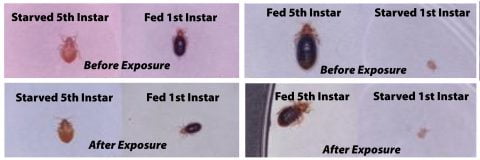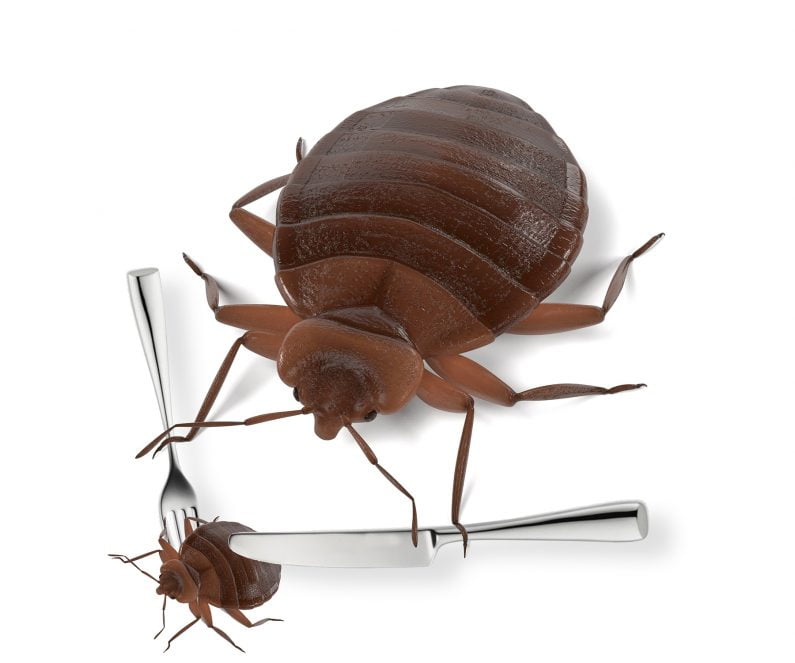Our industry is all-too familiar with the unpleasant implications of bed bug infestations, whether that be their vampire-like dependency on human blood, or their alarming reproductive practice of traumatic insemination. Despite having this knowledge, in our field there is the frequently asked question Are bed bugs cannibalistic? That is, do they resort to sucking blood from one another in order to sustain their survival?
After taking a look at previous literature and studies, we have discovered that there is a distinct lack of research into this behavior, having only found one publication since 1930 that suggests this behavior may occur. Therefore, we figured it was time to address this question under controlled laboratory conditions.
Simona Principato carried out our investigation during her master’s thesis research, situated in the Jenkins Lab at the Pennsylvania State University.
Method
To ensure that we provided our test bed bugs with optimal conditions to feed from each other, certain measures needed to be put in place. These included some bed bugs being starved for weeks before being introduced to other very well-fed individuals from the colony.
Bed bugs were introduced to each other in pairs, one starving bug with one well fed bug. We also took interest in examining whether the life stage of the bed bug had any impact; so we set up two studies to answer the following questions:
- Are 1st instar nymphs more likely to cannibalise older instars due to their more plentiful blood supply?
- Do 5th instars cannibalise the 1st instars, taking advantage of their thinner cuticle?
Five replicate pairs of bed bugs (one fed and one starving) were selected and placed together in a small glass vial. The vials were set in a water bath; ensuring they maintained an ambient temperature of 100°F for 12 hours.
The heat within the vial ensured that engorged bed bug’s blood would be maintained close to human blood temperature. This was done to maximize the chances that the starved bed bug would feed from its engorged partner. The pairs were then observed at regular intervals to see if cannibalism was occurring.
At the end of the 12-hour period, we examined the starved bed bugs to determine if any blood was visible in the gut and checked the engorged bed bug for any signs of probing or penetration.
Results
Our results found no blood in the intestine of any of the starved 1st or 5th instar nymphs after 12 hours. Furthermore, there was no evidence of penetration or probing on the engorged 1st or 5th instar nymphs (Figure 1).
Figure 1 Before and after 12 hours of exposure to either starved or fed nymphs. No blood was present in the intestine of the starved 1st or 5th instar nymphs and the fed nymphs showed no evidence of being pierced.

Follow-up studies
Following these conclusions, we decided to set up an additional assessment; placing one well-fed 5th instar nymph with twenty starved 1st instar nymphs; using the same environmental conditions as the first experiment, but again, no feeding occurred.
Finally, in our last assessment we offered starved 1st and 5th instar nymphs a warm, freshly dead nymph, whose blood was slightly leaking from the cuticle after an induced mechanical wound. However, once again there was no evidence of feeding from the bed bugs.
Conclusion
Despite previous studies discovering that cannibalism HAS been demonstrated in other insects of the Order of Hemiptera (Kissing bugs) under laboratory conditions, from our studies we can learn that this behavior does not appear to occur in bed bugs. So, while we can confirm that bed bugs are blood-sucking vampires and that the males are vicious sexual predators, at least they cannot be accused of cannibalism!
Find out more about how Aprehend can help professionals win the fight against bed bugs – check out the case studies and our products, then give us a call at (800) 891-8610. We can discuss how to integrate Aprehend into your current protocol, reduce call-backs, and eliminate the most difficult infestations
References
Harlan, H.J. 2007. Bed bug control: challenging and still evolving. Outlooks on Pest Management, 18, pp. 57-61.
Lazzari, C.R., Fauquet, A., Lahondère, C. 2018. Keeping cool: Kissing bugs avoid cannibalism by thermoregulating. Journal of Insect Physiology, 107, pp. 29-33.
Rivnay, E. 1930. Host Selection and Cannibalism in the Bed Bug Cimex Lectularius L. Annals of the Entomological Society of America, 23(4), pp.758–764.

